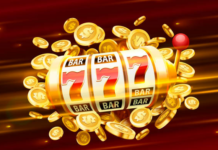For owners and operators of commercial buildings, water damage is a frequent and frequently expensive problem. It may result in interruptions to corporate operations, health risks, and structural issues. Early detection of the symptoms of water damage is essential to avoiding large-scale, costly repairs. This post will go over the five main indicators of water damage in commercial buildings and how to deal with them.
1. Stains and Discoloration
Stains and discolorations on walls, ceilings, and floors are among the most obvious indicators of water damage in business buildings. These stains might take the form of erratic patches or streaks and are frequently yellow or brown. Whereas stains on ceilings may point to a leak from the roofing or plumbing, stains on walls may run downward in a vertical pattern, suggesting a leak from above. Stains that are visible in some situations might also be caused by water seeping in via windows or external walls. To stop more damage, it’s critical to investigate the cause of the water entry as soon as possible and take appropriate action. In addition to obvious stains, damage from water can discolor surfaces in less obvious ways. These might be modest adjustments to the wallpaper design or paint color. These small indicators are sometimes easy to miss, yet they can offer important hints about underlying problems with the water.
2. Mold and Mildew Growth
One of the most obvious signs of water damage in a business facility is the appearance of mold and mildew. Mold grows best in damp conditions, and its spores can be dangerous to humans. On surfaces, mold might show up as green, black, or white spots and smell musty. If you find mold or mildew in your business structure, you must take immediate action to address the root cause of the moisture issue and carry out the necessary mold treatment. Mold treatment entails treating the source of humidity that allows the mold to grow in addition to eliminating the visible mold. Leak repairs, better ventilation, and humidity management inside are a few examples of this. Furthermore, to guarantee the safe and efficient removal of mold, mold removal should only be carried out by experts in mold remediation.
3. Warped or Buckled Flooring
Commercial flooring may become elevated, distorted, or uneven because of water damage. Buildings with hardwood or laminate flooring, which are prone to moisture penetration, are commonly affected by this issue. A variety of deformed flooring patterns, like buckling, cupping, crowning, and bubbling away, may be observed; they indicate the presence of water damage. If you see any of these issues, it’s likely that water has leaked into the subfloor. Warped or cracked flooring can be quite dangerous for the occupants of the building in addition to being aesthetically unpleasant. Ignoring uneven flooring can lead to structural issues as well as a trip hazard. In extreme circumstances, the subfloor may start to decay and grow mold, which would harm the structure over time. When faced with such flooring issues, it’s advisable to seek professional assistance for commercial water damage restoration to address the underlying problem effectively.
4. Peeling Paint and Wallpaper
A business building’s paint and wallpaper peeling, splitting, or bubbling is one of the obvious signs of water damage. Water leaking through ceilings or walls can weaken the bond between these materials and make them separate from the surface. Peeling paint and wallpaper may be ugly and indicate a persistent water problem that needs to be addressed. There are situations where replacing the damaged walls or ceilings is necessary to repair the damage. These problems reveal underlying water damage in addition to impairing the building’s looks. Water intrusion can cause materials under paint or wallpaper to deteriorate, possibly jeopardizing the walls’ or ceilings’ structural stability.
5. Unpleasant Odors
Musty, moist, or unpleasant smells are frequently produced by water damage in business buildings. These smells may be caused by standing water, decaying debris, or the development of mold and mildew. Not only can offensive smells lower indoor air quality, but they also make it difficult for building inhabitants to work in. Maintaining a hygienic and effective workstation requires locating the source of these smells and fixing the underlying water problem. Not only may the atmosphere for building occupants be improved by identifying and removing these unpleasant aromas, but it also helps to identify whether water damage is present.
Conclusion
Water damage in a company facility can result in several issues, such as interruptions to operations, issues, and structural damage. Reducing the extent of damage and associated costs requires early recognition of the signs of water damage. You must move quickly to locate and deal with the cause of the water incursion and repair the impacted areas if you see any of the warning indicators covered in this article.









